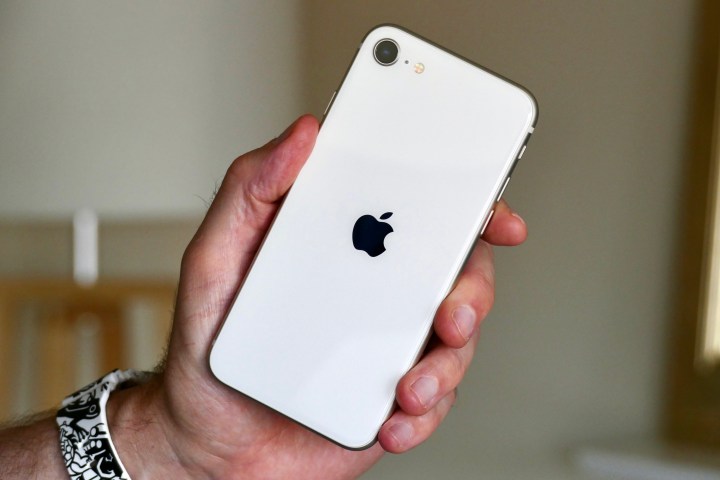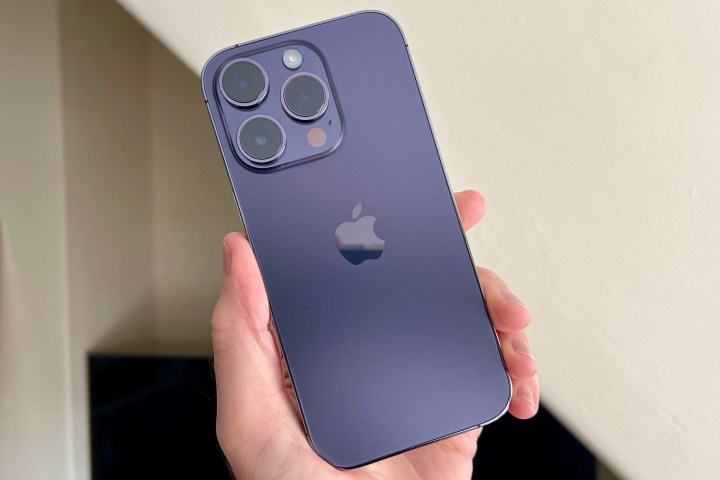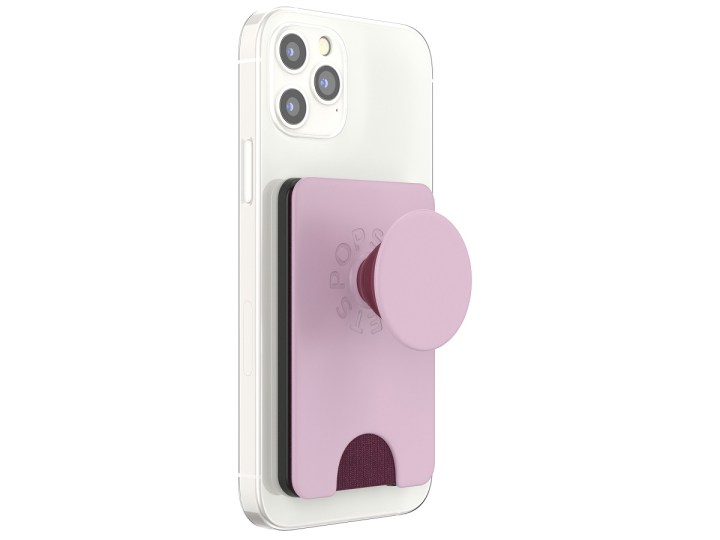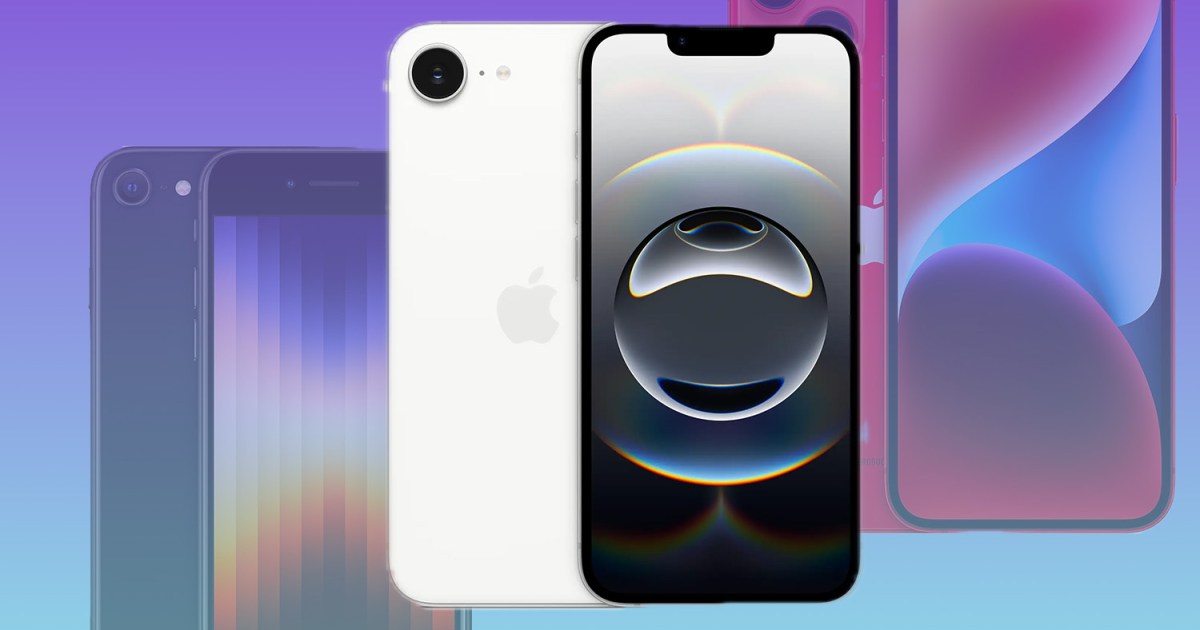When it’s the first half of a year, and a new iPhone has been announced, you know it’s not one of Apple’s next-generation flagships like the iPhone 16 or iPhone 16 Pro. Instead, a new iPhone this time of year is usually a new SE model. Not in 2025, however. On Wednesday, the world said hello, not to the “iPhone SE 4” but to the iPhone 16e.
The new handset replaces the iPhone SE 3 as Apple’s most affordable iPhone. However, it doesn’t take cues from earlier SE models. Instead, it resembles the 2022 iPhone 14, which, like the iPhone SE 3, was removed from the market this week.
But make no mistake, the iPhone 6e isn’t the iPhone 14.
Given that one handset is nearly three years newer than the other, one might assume that means the iPhone 6e is better than the iPhone 14. Strangely, that’s not the case, at least across the board. In some cases, Apple removed features from the discontinued iPhone 14. These trade-offs make the iPhone 16e $200 less expensive than the iPhone 14 when it was initially released. And yet, some of these omissions will leave some scratching their heads.
The good news

First, let’s stick with the positives about the iPhone 16e, and there are many.
The new iPhone 6e includes the same terrific 6.1-inch Super Retina XDR (OLED) display as the iPhone 14. By comparison, the iPhone SE 4 had an LCD. The result is not only a better display, but you also get Face ID vs. Touch ID. The newer phone is also slightly lighter than the iPhone 14, which is always nice for an object you’ll probably carry for hours at a time.
Beyond this, the iPhone 16e has many features that the iPhone 14 does not. This starts with its A18 chip, a significant improvement over the iPhone 14’s A15 Bionic chip.
The regular A18 chip, which is also found in the iPhone 16 and iPhone 16 Plus, represents a significant advancement in performance and efficiency compared to the A15 Bionic. The A18 features a faster CPU, boasting up to a 50% increase in speed over the A15, which results in smoother multitasking and quicker app launches. Its improved GPU offers up to 40% faster graphics processing, leading to more immersive gaming experiences and enhanced performance in graphically demanding applications.
Furthermore, the A18 includes a more advanced Neural Engine, accelerating machine learning tasks and enabling more innovative features. These upgrades contribute to a more responsive and capable device, allowing users to manage demanding tasks while seamlessly enjoying a fluid user experience.

Thanks to the newer chip, the iPhone 16e, unlike the iPhone 14, supports Apple Intelligence. This is certainly good news for anyone who wants a smartphone with Apple’s first AI tools but wants to spend less than they would on other supported phones.
This newer, more efficient chip, coupled with a better battery, means the iPhone 16e can last up to six more hours between charges than the iPhone 14. Thank you, Apple.
Other upgrades on the iPhone 16e compared to the iPhone 14 include the versatile Action Button and a USB-C, not Lightning connector. The newer phone also features some slick camera upgrades. Visual Intelligence lets you get information about your surroundings by pointing your iPhone’s camera at something. It’s like having a super-powered visual search engine in your pocket.
The iPhone 16e also offers better optical zoom options and HDR 5, not HDR 4, for photos. The latter means that images taken with the newer phone will include enhanced dynamic range, improved tone mapping, and brighter highlights than images taken with the iPhone 14.
Two other perks you’ll receive on the iPhone 16e that are missing on the iPhone 14 include wind noise reduction and Apple’s Audio Mix feature. Both make videos you take more impressive.
The bad

The features above make the iPhone 16e more advanced than the similarly designed iPhone 14. However, some differences feel more like a step or a few steps back. Each omission was undoubtedly made to lower Apple’s cost for the new phone.
This starts with two significant downgrades: no MagSafe and no ultra-wide camera. The first tool, launched on the iPhone 12 series, provides a convenient and efficient way to wirelessly charge iPhones using magnets embedded in the back of supported phones. As such, it offers faster and more reliable charging than traditional Qi wireless charging.
Moving on, I realize the iPhone SE 3 also didn’t have an ultra-wide camera. However, Apple’s decision to produce a phone without one in 2025 is difficult to understand. Ultra-wide cameras have many advantages, and some of these would appeal to first-time iPhone owners (think teenagers), such as the ability to take landscapes, creative shots, and more.
Since the iPhone 16e does not have an ultra-wide camera, Apple has also elected not to include two camera features that are on the iPhone 14: Cinematic mode and Action mode. These modes enhance video quality by adding a depth-of-field effect and stability to shaky video footage.
Another noteworthy omission is that the iPhone 16e does not have an ultra-wideband chip. These chips enable a range of features that enhance user experience. For example, they allow precise location tracking, improve connectivity, and provide better spatial awareness.

Not including MagSafe magnets, an extra camera lens, and an ultra-wideband chip undoubtedly reduces Apple’s cost of manufacturing the iPhone 16e and, in doing so, the company’s price for the phone.
From a financial standpoint, these omissions do make sense. However, given that the 2022 iPhone 14 had these, the missing features feel like a move back for the iPhone lineup as a whole.
Finally, Apple’s decision to offer the iPhone 16e only in black and white is puzzling. Is this a throwback to 2008, before Apple discovered that its top-selling product could sell in more than two colors? Has Apple become allergic to the color red?
The last two iPhone SE models were available in three colors, while the first was offered in four. Knowing this, it probably wouldn’t be asking too much for Apple to give budget iPhone buyers at least a choice of three colors, right?
The bottom line
Anyone who owns an iPhone SE 3 or earlier will appreciate the iPhone 16e—they will love it, in fact. The phone features a larger display, enhanced internals, and numerous other upgrades. Those upgrades alone are all Apple needs to justify the iPhone 16e compared to the iPhone SE 3, and I’m aware of this.
However, given that the iPhone 16e has replaced the iPhone SE 3 and the iPhone 14 in the lineup, some might not be too happy about the new handset’s arrival. These folks might have expected more from Apple. MagSafe, more than one rear camera, and more colors—is that asking too much? I think not.
Of course, one can have all those things—and more, by ponying up an extra $100 and buying a regular iPhone 15. Of course, that would mean no Apple Intelligence, but that’s a different story for another time.
